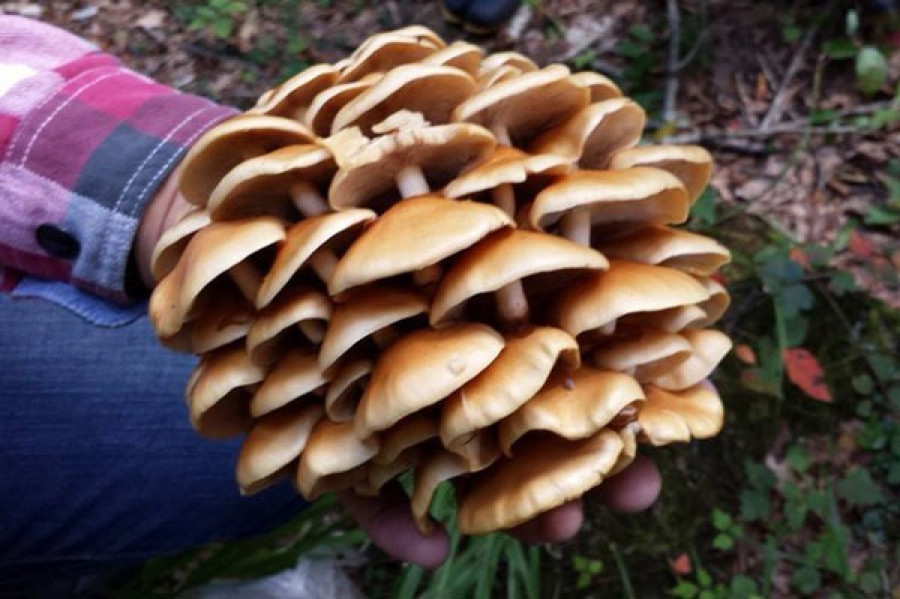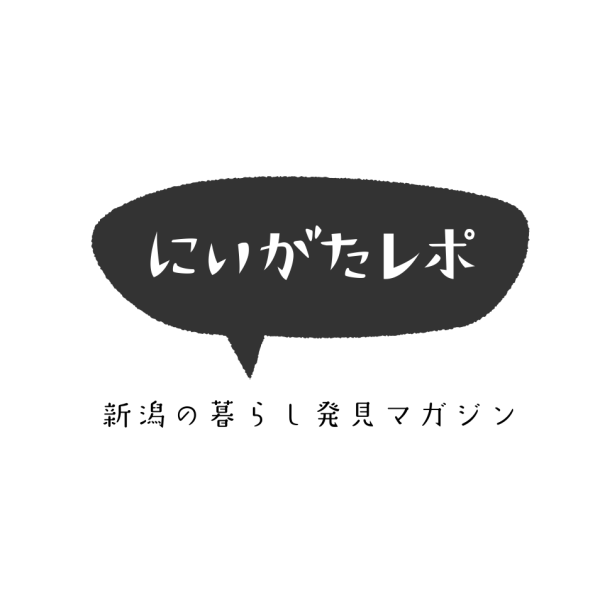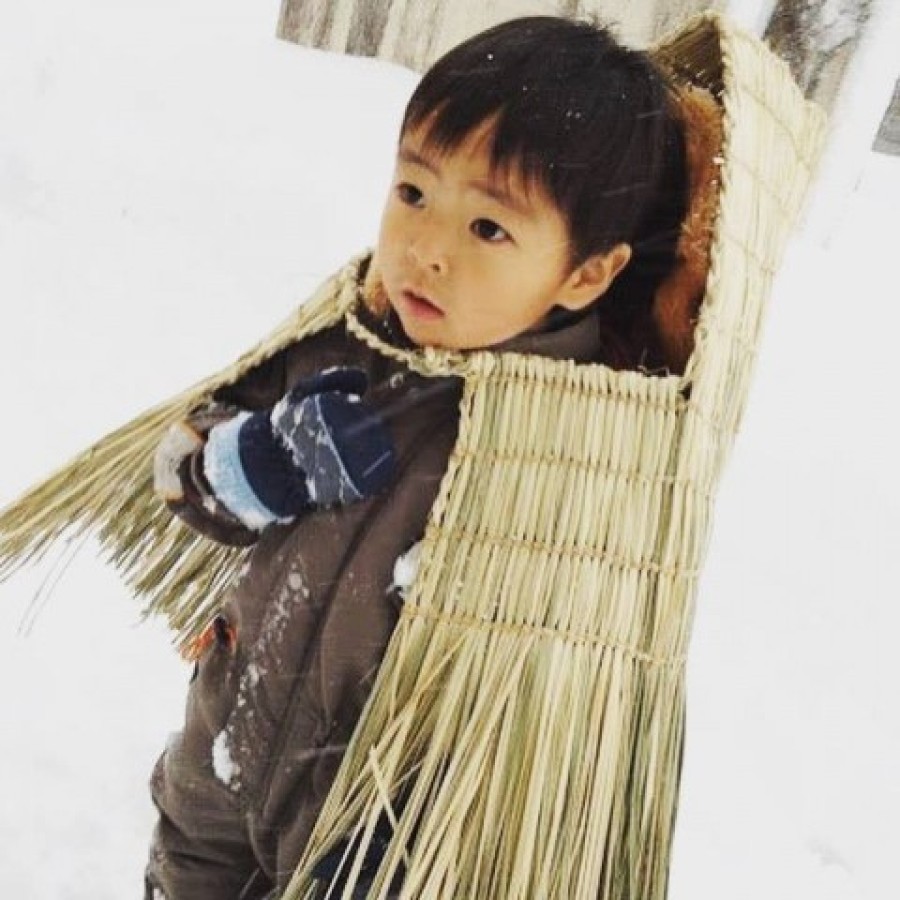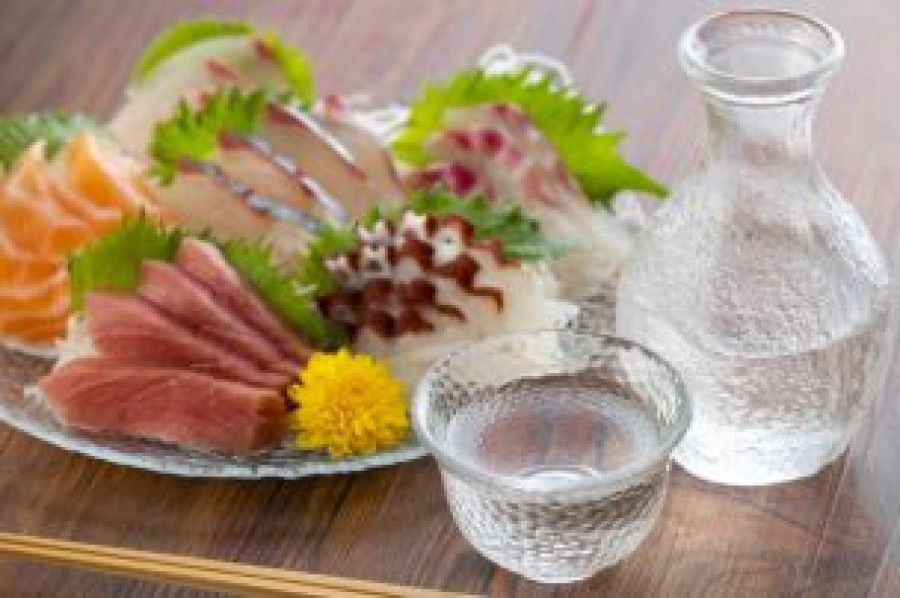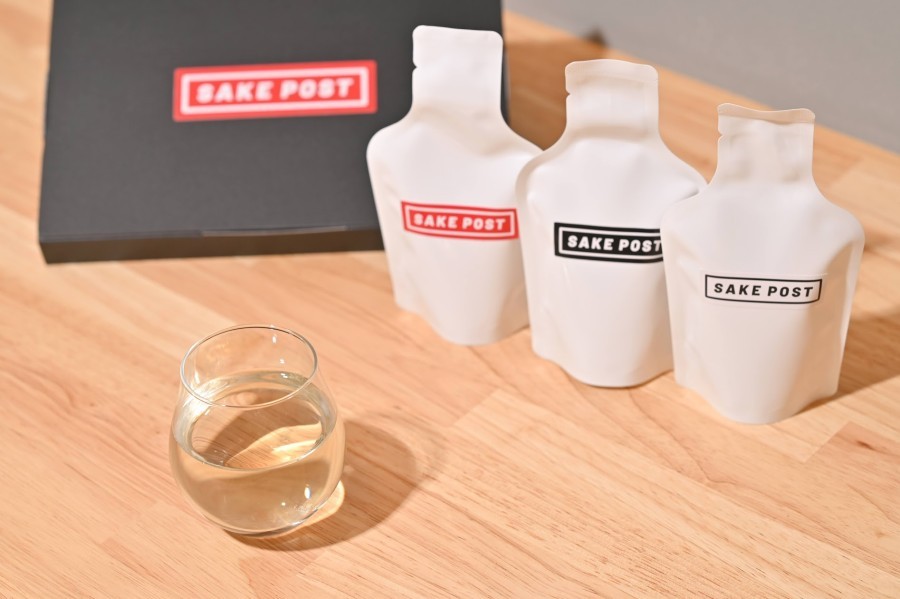Sado is known for its 'mushrooms!'
Most people do not have a clear idea of what this means.
Needless to say, however, Sado has an abundance of rich nature. Furthermore, while the climate is milder than that of mainland Niigata due to the Tsushima Warm Current, there are also a series of 1,000 m-high mountains in the area close to human settlements. As a result, the area is a veritable treasure trove of nature, with a wide variety of plants growing wild.
Of course, mushrooms can also be found in abundance. As long as you keep to the points where they grow wild, you can collect delicious mushrooms, natural ones at that.
That is why I took part in the annual summer 'mushroom camp' of the Creative People's Salon-Mon.
The 'mushroom camp' is a very simple event, but it is quite a profound one.
This time, they will be targeting Naratake mushrooms, nameko mushrooms and maitake mushrooms.
On a certain day in September, we head for a spot in a certain part of the Sado and Sado Mountains, which is also blessed with fine weather.
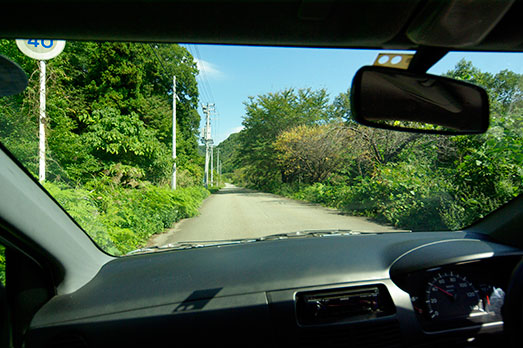
After parking the car and walking for a few minutes, we finally arrived at the first spot. Due to the fact that it had rained the day before, there were mushrooms growing wild pretty much everywhere.
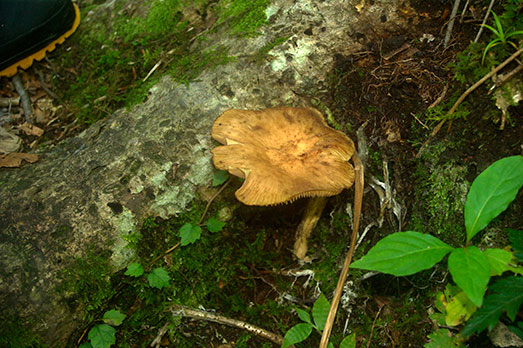
This is a Naratake mushroom (← I believe that's what I was taught). It grows on tree trunks like this. They often grow on fallen trees.
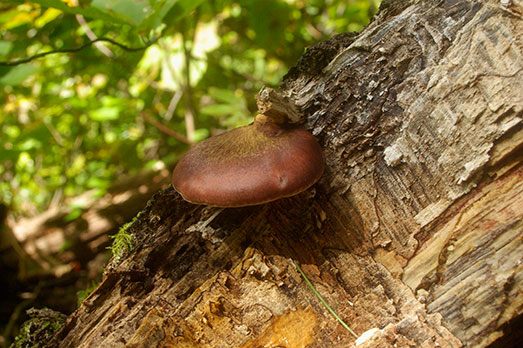 'Never pick or eat them.'
'Never pick or eat them.'
'Oh, wow!' I ran up to it and found a magnificent mushroom growing on it, maybe 10 cm long, quite large. Is it a shiitake mushroom? They look beautiful and delicious.
but this is a Tsukiyo mushroom. It is a poisonous mushroom. Never eat it! Incidentally, it is said to glow at night, albeit dimly. (It is the inside of the umbrella that glows).
Yes, many mushrooms are toxic. Many specialist books have been published on the subject, but it is also very dangerous to judge them on appearance alone.
Incidentally, the tsukiyotake mushroom can easily be mistaken for the flatulence mushroom, and cases of food poisoning caused by the mushroom occur every year. Niigata Prefecture also issued a 'poisonous mushroom warning' on 1 October this year, calling for caution. ( Niigata Nippo Moa: food poisoning by the chytrid fungus in Murakami ).
When going into the mountains to collect natural mushrooms, always ask someone in the know to judge whether they are safe.
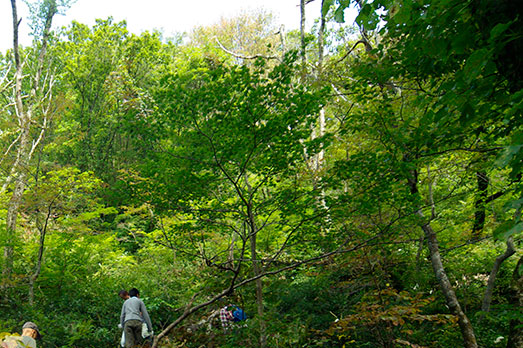
Of course, several members of the 'mushroom camp' are experienced in mushroom collecting & cooking, and we always check on the spot. Nevertheless, we will take care not to collect any difficult to judge.
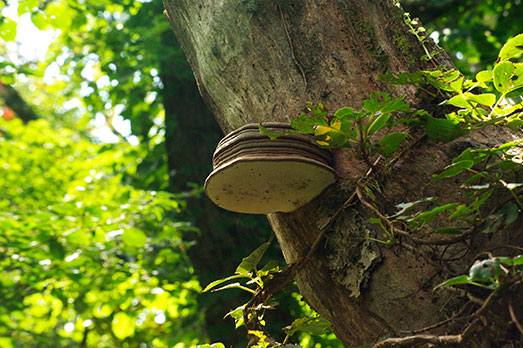
Is this also a mushroom? Sarcochelysium mushrooms? It looked like a man-made object. Only photographed because the position where it grew was too high.
The participants who joined us later, as well as family members of members of the group, find themselves in the company of more than a dozen people collecting mushrooms.
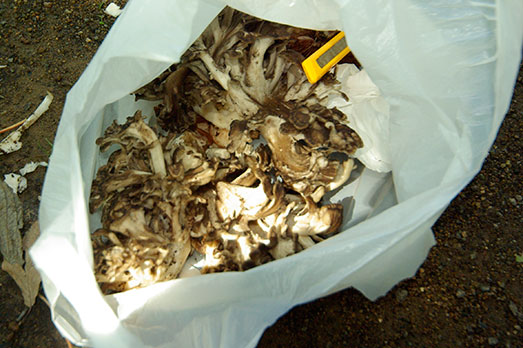
It is time to finish collecting at the first point. This is a maitake mushroom collected by member T. It is a natural maitake mushroom. According to Mr T, even this is "only a little bit".
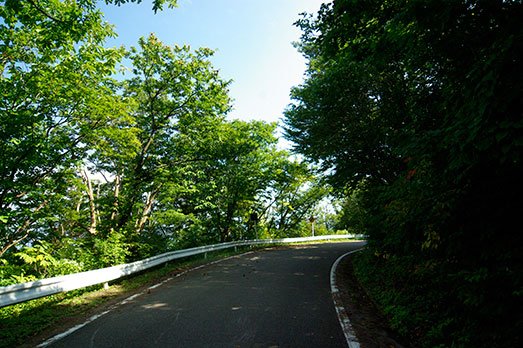
The time is exactly noon and after lunch we head for the second point.
Here, too, we park the car and within minutes of walking, we find numerous mushrooms. The main members of the group keep moving further and further in.
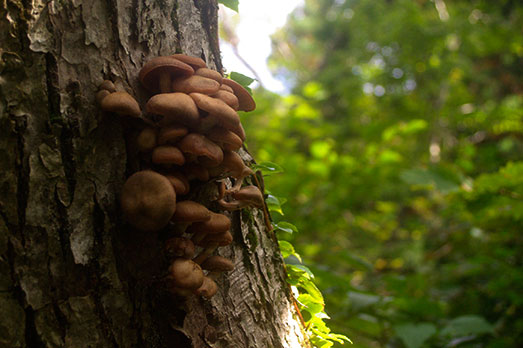
A lot of it, anyway, is growing. However, don't pick them all, but leave some behind. Also, don't force things that grow on the top of trees. If you try to force yourself to climb the tree, the branches may break or collapse, which is dangerous.
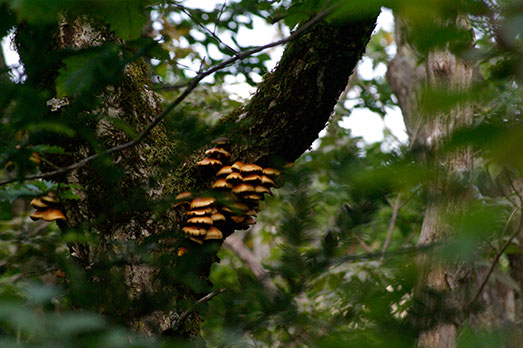
After about one and a half hours in the mountains, we unfortunately could not pick maitake mushrooms here, but we did collect a lot of nameko mushrooms and pearl oyster mushrooms. On the way back, we stopped at Donden Sanso for a short break.
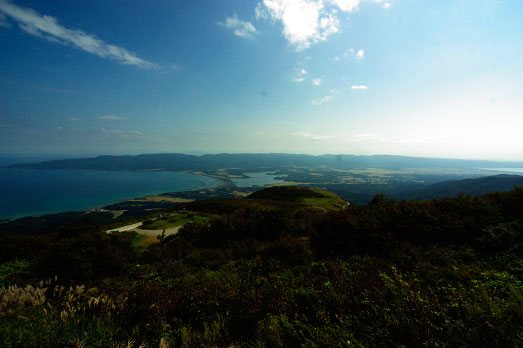
From here you have a panoramic view of Sado Island. There are no clouds and the car ferries sailing in Ryotsu Bay look small. Looking at it this way, I thought again that Sado is a big, beautiful and amazing place.
Now, after this, the "Mushroom Camp" will finally come to an evening session! (continued)
[Attention.
When collecting natural mushrooms, always ask someone in the know to determine whether they are safe. Never collect mushrooms of which you are unsure of the type.
Do not enter areas where entry to the mountain is prohibited or mushroom gathering is forbidden (national parks, national parks, nature reserves, nature parks, etc.). If the owner or manager of the mountain is present, ask the manager for permission.
When picking mushrooms, take extra care not to get lost. Beginners in particular should not go into the mountains alone, but with more than one person who knows the terrain.
*The photographs in this article do not guarantee the type or safety of the mushrooms.
advertisement


